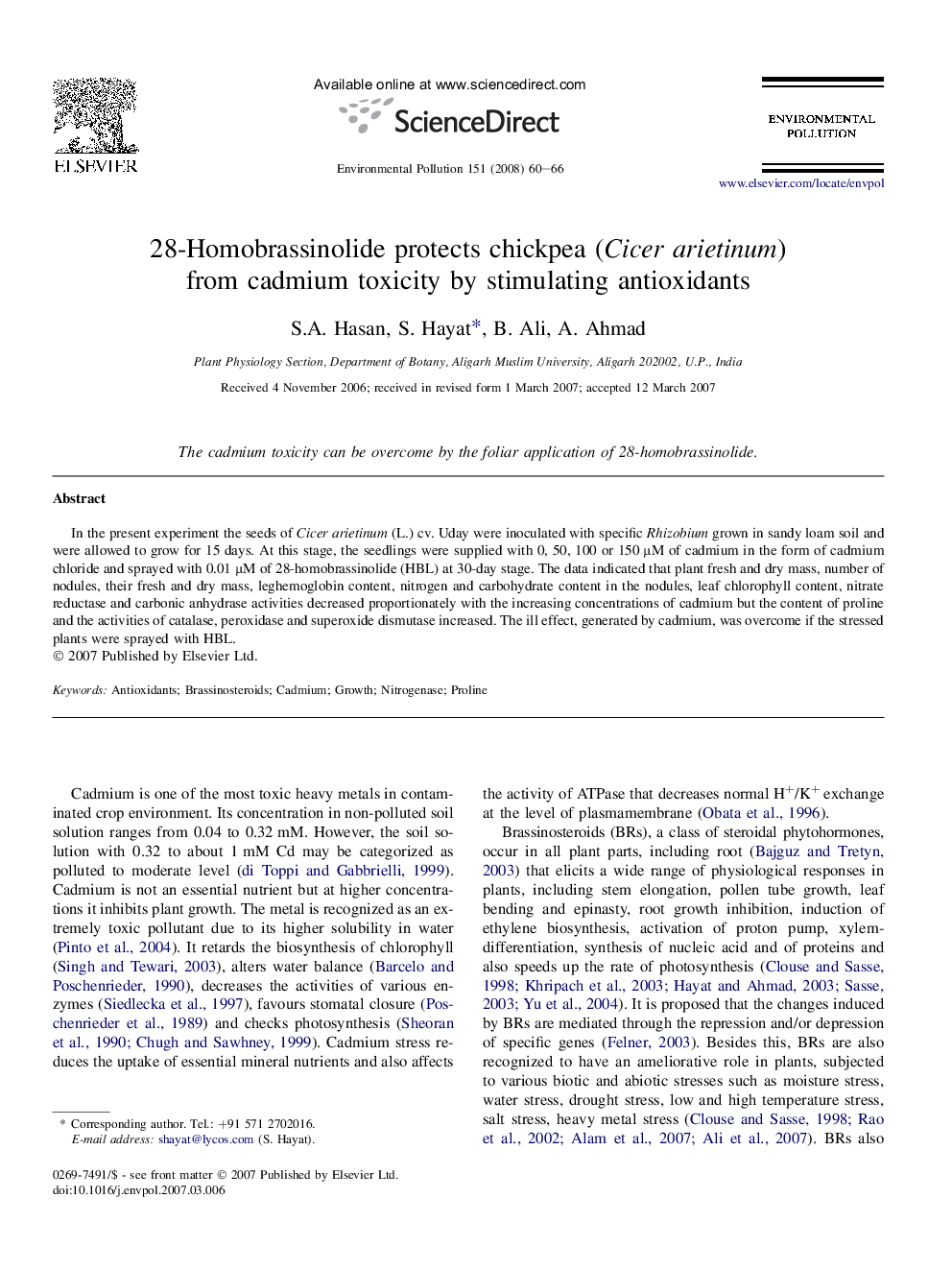| Article ID | Journal | Published Year | Pages | File Type |
|---|---|---|---|---|
| 4427230 | Environmental Pollution | 2008 | 7 Pages |
In the present experiment the seeds of Cicer arietinum (L.) cv. Uday were inoculated with specific Rhizobium grown in sandy loam soil and were allowed to grow for 15 days. At this stage, the seedlings were supplied with 0, 50, 100 or 150 μM of cadmium in the form of cadmium chloride and sprayed with 0.01 μM of 28-homobrassinolide (HBL) at 30-day stage. The data indicated that plant fresh and dry mass, number of nodules, their fresh and dry mass, leghemoglobin content, nitrogen and carbohydrate content in the nodules, leaf chlorophyll content, nitrate reductase and carbonic anhydrase activities decreased proportionately with the increasing concentrations of cadmium but the content of proline and the activities of catalase, peroxidase and superoxide dismutase increased. The ill effect, generated by cadmium, was overcome if the stressed plants were sprayed with HBL.
